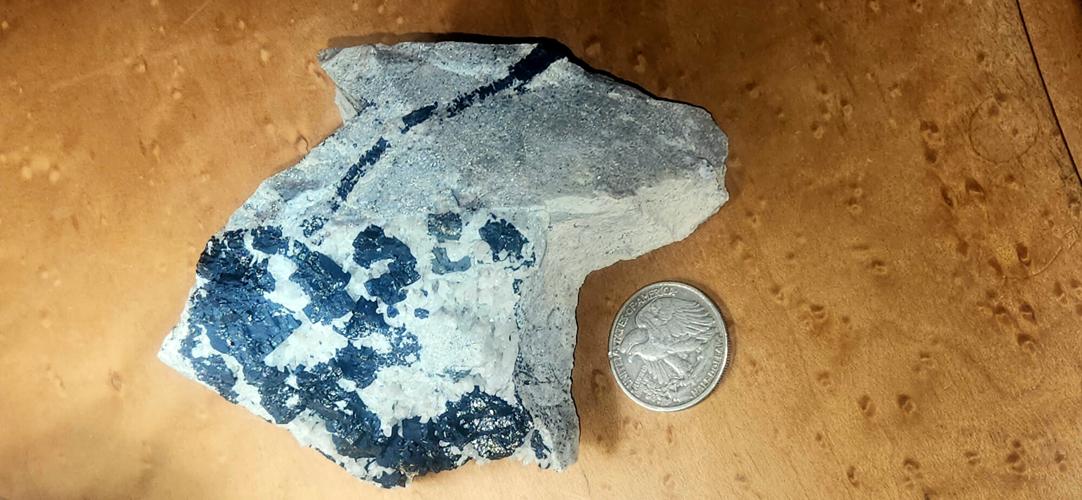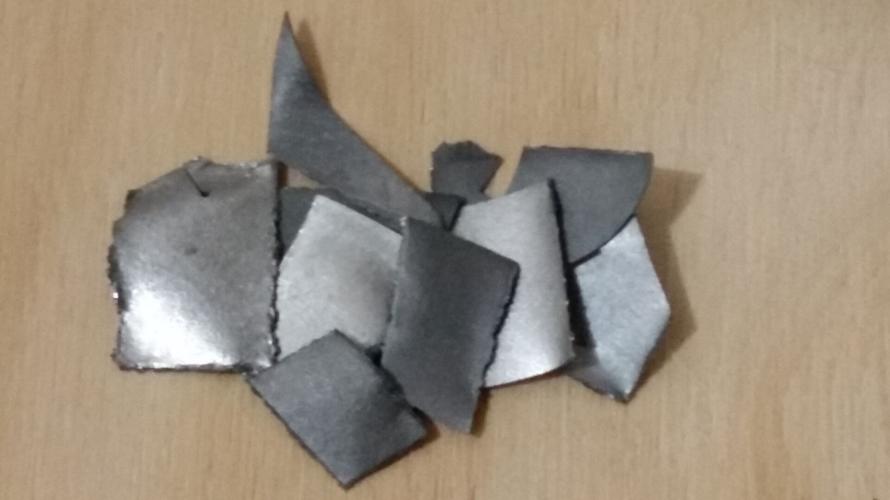Arizona has the distinction of many mine sites that have diverse geology and mineralogy.
Located 20 miles southwest of Tucson, the Sierrita Mine, currently operated by Freeport-McMoran, is one of the largest copper molybdenum mining operations worldwide.
It was originally prospected in 1895, however, it was not until 60 years later that its value as a disseminated porphyry copper deposit was determined by Harrison Schmitt, who recommended its development to the Duval Sulphur and Potash Co., which in turn brought it into large scale production in 1959.
Milling operations commenced in 1970. There was noted production of chalcocite and covellite, important secondary copper sulfide minerals, along with molybdenite, which contains 100- and 3,000-parts-per-million of rhenium, a rare element found in less than one-part-per-billion of the earth’s crust.
Milled onsite, the Sierrita Mine is currently the only internal U.S. source of rhenium, a metal used by the aerospace industry as a superalloy in jet and industrial gas turbine engines. Noted for its heat and corrosion resistance, rhenium adds longer engine life coupled with higher performance and operational efficiency as noted in its usage in high-octane lead-free gasoline.
Freeport-McMoran Copper & Gold’s Sierrita refinery recovers rhenium from the gases released upon roasting of molybdenite concentrates and dissolved rhenium from sulfuric acid inside the flue stack.
Miners were drawn to the Mineral Creek Mining district located in the valley between the Tortilla and Dripping Spring mountains initially for silver deposits in the 1870s. Evolving to small copper production the following decade by the Ray Copper Co., it drew further development upon geological surveys revealing the ore deposit to be a secondary enrichment of disseminated chalcocite in Pinal schist, classified as very fine to medium grained metasedimentary rocks formed 1.7 billion years ago.
Development began with underground mining followed by the move to open pit mining operations by 1955 along with dump and heap leaching through the present day. The Ray mine is known for well sculpted mineral specimens including native copper and cuprite.
While not notable for production, the Evening Star Mine (also known as the Old Queen Group) located in the Big Horn Mining district in Maricopa County is renowned for many rare mineral discoveries including the rare lead chromate mineral phoenicochroite along with fornacite, a rare lead, copper chromate arsenate hydroxide mineral and wickenburgite, a secondary lead mineral formed from the oxidation of lead ores.
The Big Horn Mountains encompass 500-square-kilometers in west-central Arizona and are noted for their complex geology. Early prospectors were attracted by iron oxide stained quartz veins in the area. The Evening Star Mine includes six claims originally located by Frank Robinson in 1949. Production included small amounts of gold, silver and copper along with lead in Precambrian granite and gneiss. Development included a 69-foot shaft and a 197-foot incline.
The Crown King Mine at 5,500 feet in elevation was the most economically profitable between 1875 through 1885. A gold mine that also produced over $1.2 million in silver, it was one of the most productive silver mines in Yavapai County.
The geology of the mine property consists of Pre-Cambrian schists and granites with silver and minor gold found in quartzite and rhyolite fissure veins and three parallel ledges rising in excess of 15 feet above surface. Silver mineralization was discovered in the form of cerargyrite (horn silver) along with small amounts of embolite (silver chloride and silver bromide) and bromyrite (silver bromide). Trace amounts of argentite and gold were also discovered at the site along with some copper, antimony and zinc from sulfide ore discovered at the lower mine levels.
The Mistake Mine, a 21-acre lode claim located in the Box Canyon Mining district in Yavapai County, is notable for its ramsdellite mineral specimens. Ramsdellite is a rare manganese oxide formed in veins and bedded manganese deposits. Discovered in 1954, this former surface and underground manganese mining operation property is currently overseen by the Bureau of Land Management.
Lesser known mining localities include the S and O claims, a claim group of prospect pits and trenches located east of Wickenburg. Found here were some fine purple octahedrons of fluorite on quartz, cerrusite, a lead carbonate on barite crystals, along with zippeite; a rare uranium mineral classified as a hydrated potassium uranyl sulfate hydroxide.
Zippeite forms as a secondary mineral and also forms on the surface of a rock by efflorescence, a process when water evaporation comes into contact with dry air. Another obscure locality known as the Kullman-McCool Mine includes the brick claims, lead silver claims, lower D & H claims and the well-known Finch Mine (Barking Spider Mine) in the Dripping Springs Mountains.
The mineralization occurs in contact zones of limestones with igneous porphyries, dikes, fractures, fissures and bedding planes. Mining in the area dates back to 1880 and by 1930 over 130 mining claims had been filed and worked for vanadium, molybdenum, zinc and copper by the London-Arizona Consolidated Copper Co. Ore was shipped to the Hayden smelter from refinement. The area is noted by mineral collectors, including the Finch Mine, which is known for its wulfenite crystals with a thin layer of drusy quartz. The lower D & H claims host the rare sulfate mineral ktenasite.
The Silver Hill Mine, located 41 miles northwest of Tucson in the Waterman Mountains, has seen sporadic production since first prospected in the late 1800s until the late 1940s. Production included a minimum of 16,000 tons of ore including copper, silver, lead and some gold. Consisting of a 400-foot shaft and 300-foot drift the mine has a history of production involving 120 cars of copper and lead ore shipped to the El Paso smelter in the 1940s.
Later, copper recovery involved recovery from mine water at 8 to 12 pounds of copper per 1,000 gallons of water. The ore occurs as replacements in limestone and is a mixture of carbonates and sulphides. Mineral collectors are drawn to the site for aurichalcite, rosasite, smithsonite, and glassy botryoidal to crystalline masses of the rare secondary mineral osarizawaite found in the zone of oxidized over lead bearing deposits.
Watch a test drive of Caterpillar's first battery electric mining haul truck at the Tucson Proving Ground in Green Valley.














